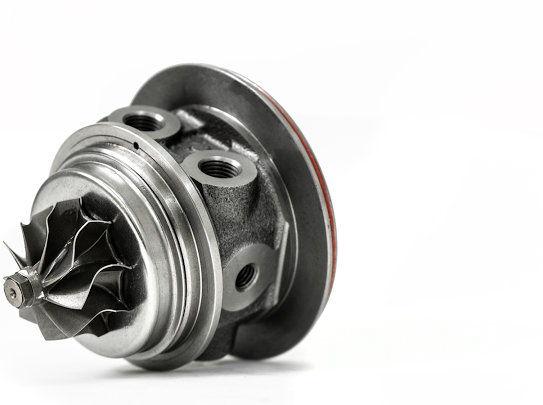W2 Drop-in Turbo Upgrade - Design Pt 3; Compressor Cover Selection & CHRA
In part 2 we showed you guys how we are going to make more power and still maintain an OEM like fitment with our design of a brand new cast turbine housing. In this blog, we are going to move from the exhaust side of the turbocharger and flip over to the intake side of the unit (aka the compressor cover). We are also going to dive in and break down the CHRA (center housing rotating assembly) we selected, share a little history lesson, and discuss the improvements we’ve made.
The compressor cover, just like the turbine housing, can be defined by its A/R (area over radius). And just like we did for the turbine housing we are increasing the size of the compressor housing A/R to support our goal to make more power more efficiently. The well-established power output of the W1 and the OEM turbochargers help us take this next step.
We are increasing the capacity and the A/R of the compressor housing from the W1 0.43A/R to 0.50A/R for the W2. This will allow us to move more air (capacity) and move that higher volume of air more efficiently from the wheel exducer and into the intercooler piping. As you can see in the above image, the internal cross-sectional area of the compressor housing is much larger. In order to achieve this, we are developing a 100% new compressor mold for the W2.
Below you can see an external view of the W1 and W2 compressor housings. With the W2’s design goal to increase peak power, we decided to maximize the compressor outlet as much as possible to support the larger A/R. This has similar logic as the garden hose example from part 2. Bigger is still better but this time flow is in the opposite direction.
W1 on the left and W2 on the right
Now with a larger turbine housing and a larger compressor cover you might be asking what did we do with the middle part of the turbo where the oil and coolant circulates. Did we make that bigger as well? Before we answer we’ll give a brief history lesson about your Honda Civic Turbocharger.
The OEM turbo on your 10th gen Civic is manufactured and developed by MHI (Mitsubishi Heavy Industries). Yes, you read that right, your OEM turbo is made by Mitsubishi. Now as odd as you may think that is the reality is that it’s really not. MHI makes OEM and aftermarket turbocharger parts for several big auto brands, not just Honda. In fact, several brands partner with other brands to make goods. Remember the big deal that was made when the new Supra came out and it had a bunch of BMW parts. Well, this is not to the same degree as that but the truth of the matter is that parts are mixed and matched quite often. That’s just how it is.
Your OEM Honda Civic Turbocharger is an MHI TD-025 (this is the model number). The meaning of the number is not super important, just know it's very small. If we go back over 3 years ago to when Honda was marketing the pre-production 10th generation Civic, There were some vehicles running around with a TD-03 turbo in the car, “a slightly bigger unit.” This was the turbo that was supposedly going to come with the car from the factory. However, before they put the car into production for the masses, for reasons we can only speculate, they decided not to go with the TD-03 but instead the TD-025.
When 27WON developed the W1 we knew that to hit our power goals we would need to increase the size of the CHRA. That is why the W1 comes with a TD-04. With me so far?
So how do we increase reliability and performance even further on our journey to make more power and pressure? Well, we increase the size yet again. That is why the W2 will now feature a TD-04.5 CHRA.
Going to the larger TD-04.5 CHRA is how we will make sure the turbo is up to the task. You can see in the cutout above the larger coolant jackets (red arrows). These larger passages will help make sure the unit stays cool and can handle the extra heat.The (gold arrows) show a much larger bearing section. The bigger bearings ensure that we will have more surface area to evenly distribute the loads from increased pressures on the compressor and turbine wheels.
Check out some pics of our CHRA test sample below
So far we have shared with you three things that we are changing up in the design of our new W2 turbocharger system. Stay tuned for part 4 as we have more exciting news to share.
Until next time,
-Vincent





